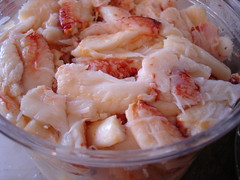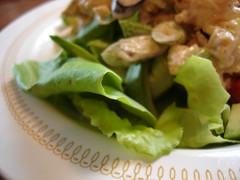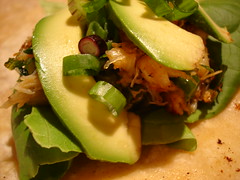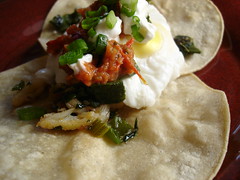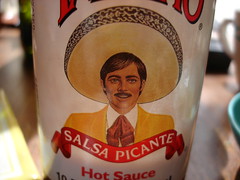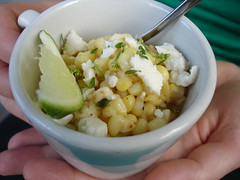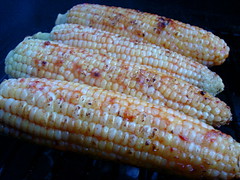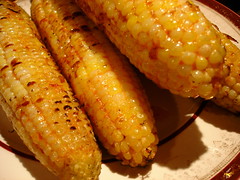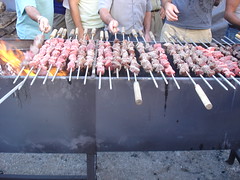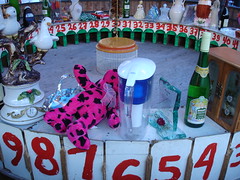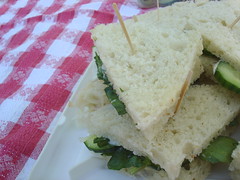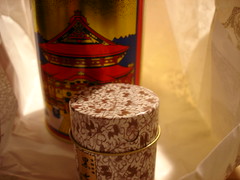When in NoVA..., pt. 1
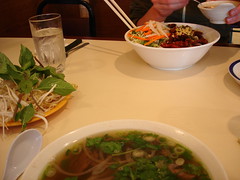 fig. a: lunchtime at Pho Tay Ho
fig. a: lunchtime at Pho Tay Ho
Let's say you find yourself in Northern Virginia for a 3-4 day spell. Stay in the Arlington/Falls Church/Baileys Crossroads area (like we did last week) and it won't take long to notice the effects of what Mike Davis once termed "magical urbanism"--the Latinoization of America's urban centers--especially if you grew up in the region like I did. Twenty years ago or so, family-style Salvadoran establishments like Abi (the "punk rock" cantina famed for its pupusas, its 2-for-1 drink specials, and its large array of framed publicity shots by local Dischord, Teenbeat, and Simple Machines bands) had just begun to make inroads in the area, and Mexican restaurants were more often than not of the ersatz variety. These days, however, Salvadoran businesses of all types abound, as do Peruvian and Mexican businesses. This means plenty of inviting restaurants, of course, but it also means an impressive array of street food, from taco trucks, to grilled corn stands, to Mexican popsicle vendors. And it means that when you go to a Vietnamese restaurant like Pho Tay Ho, you might find that the staff is mostly Latino. Does this mean the local Vietnamese population has been entirely displaced? No, not at all. Northern Virginia's "magical suburbanism" is by no means exclusively Latino. The Clarendon neighborhood of Arlington might not have the density (and quality) of Vietnamese restaurants that made it famous 10-15 years ago, but if anything the range of Vietnamese dining options in the area overall has grown since then, with Falls Church's Eden Center--with its dozens upon dozens of Vietnamese diners, cafés, and eateries--being a veritable hive of activity.
Frankly, we were overwhelmed. Still reeling from Gourmet's special issue on Latino America, we felt as though we'd found a potential promised land. And few things (other than Latin American) get us as revved up as Southeast Asian cuisine. The problem is, we just didn't have the time to do the exploring the situation clearly demanded. We barely knew where to start. One plan was to compare the action at the recently opened and highly rated Taqueria Nacionale (check out this rave review in the Washington City Paper) with about a half a dozen of Northern Virginia's finest, but that idea got torpedoed in a hurry when we drove all the way Capitol Hill (of all places) only to find that the folks at Taqueria Nacionale were on summer vacation. In the end, our survey was hardly encyclopedic (next time!), but we still managed to hit upon some taste sensations.
Pho Tay Ho
A classic no-frills Vietnamese pho joint located in a classic no-frills ca. 1950s Northern Virginia strip mall, the Culmore Shopping Center. Everything was fresh and generous, from the fresh spring rolls with pork and shrimp, to the bowls of eye round and brisket pho, to grilled pork with vermicelli. The pho broth was exceptional, but the grilled pork with vermicelli was particularly dreamy, and just the right size, too (i.e. a full size larger than is standard issue here in Montreal--yes!).
Meaza
Ethiopian in Northern Virginia? Back in the day, you had to drive to D.C. and particularly the U St./Adams Morgan corridor to find Ethiopian eats. As much as we loved getting out of NoVA and making our way into the city, there were plenty of times we wished we could have just made a quick jaunt over to Columbia Pike for an Ethiopian feast. We certainly would have been eating Ethiopian with more frequency. I couldn't believe Meaza when I spotted it: an Ethiopian restaurant/banquet/café/market on Columbia Pike? I became a believer soon enough, though--the vegetarian platter + beef stewed in red wine + doro wot (one chicken leg and one hard-boiled egg served in a dense and delectable chicken stew) made sure of that.
El Pollo Rico
We'd heard rumors that El Pollo Rico's Peruvian kitchen served up "the world's best chicken." Those are the kinds of rumors we just can't pass up. Now, I'm not sure I'm willing to anoint El Pollo Rico's chicken as "the world's best," but for a minute or two there, that fateful Thursday night, I could see why someone might want to. Our whole chicken came charcoal-grilled to perfection, and, lavishly rubbed in a magical spice and herb concoction, it was terribly flavorful. It was also succulent. Both of us lean towards dark meat when we're given a choice, but El Pollo Rico's white meat was simply unreal. We loved the accompanying sauces, too: a fiery jalapeño relish and a piquant mayonnaise number. The fries needed some work and the cole slaw wasn't my all-time favorite (Michelle wolfed hers down, though), but that chicken was nothing if not sensational. That is, until El Pollo Rico (which officially closes at 10 pm) sent out the cleaning team prematurely at 9:15.
Pho Tay Ho, 6015 Leesburg Pike, Falls Church, VA (near Baileys Crossroads, in the Culmore Shopping Center) (703) 578-3037
Meaza, 5440 Columbia Pike, Arlington, VA (703) 820-2870
El Pollo Rico, 932 N. Kenmore, Arlington, VA (703) 522-3220



